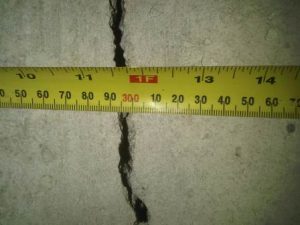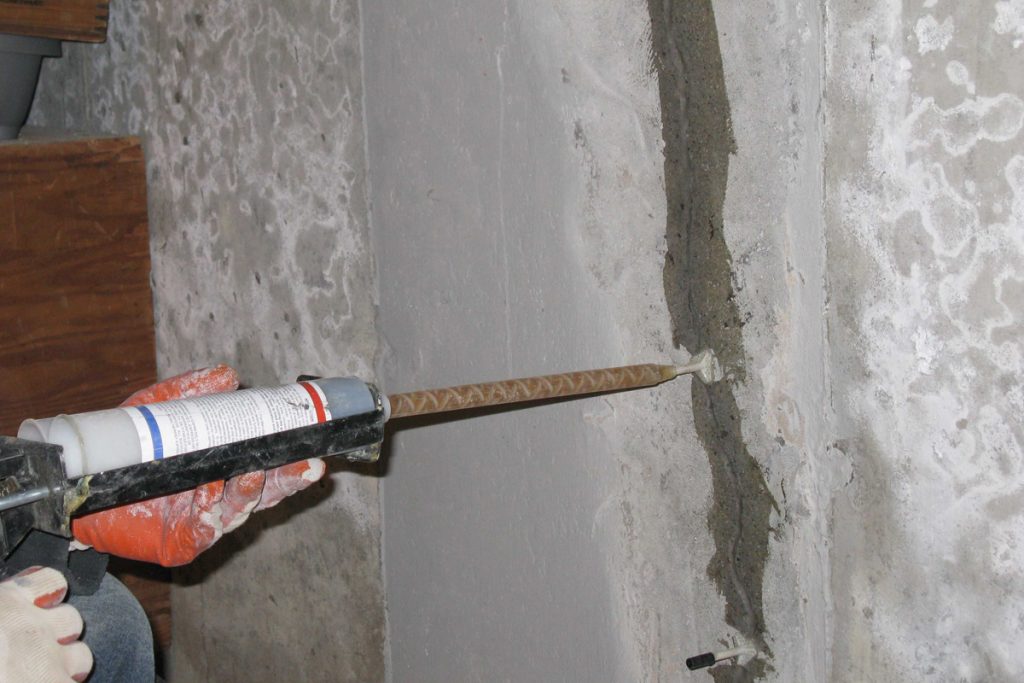 |
| An abnormally wide basement wall crack |
Basement and foundation wall cracks can be a real problem when they leak or when they are wide and of structural concern. Fortunately, wall cracks are usually repaired quite easily and at low cost; this is the big advantage of foundation crack injection over other foundation wall crack repair methods.
Here’s what we cover in this blog post:
Foundation Crack Injection Explained
Why Crack Injection is a Leading Basement Crack Repair Method
Epoxy Crack Repair
Polyurethane Crack Injection
Limitations of The Use of Crack Injection
Foundation Crack Injection Explained
Foundation crack injection is a basement foundation wall crack repair method that is widely used throughout the world exclusively for repairing cracks in poured concrete foundations and underground solid concrete structures, such as parking garages and underground utility rooms.
Crack injections are performed using two completely different techniques involving two completely different materials: epoxy, and polyurethane (sometimes referred to as urethane). Both of these materials are resins which can be injected under low pressure (<450 psi) while polyurethane can also be injected at pressures up to 3200 psi.
The principle behind crack injection is that, if you fill a crack with resin that subsequently cures, then the crack effectively disappears and therefore no longer exists.
Why Crack Injection is a Leading Basement Crack Repair Method
Traditional foundation crack repair, and basement waterproofing, involved costly and destructive excavation; naturally, the area requiring waterproofing or repair had be sufficiently accessible to allow the excavation to take place and soil needed to be piled as close as possible to the excavation. Performing an exterior crack repair typically requires excavation to a depth of 6.5 feet; therefore, the repair procedure typically requires and entire work day to compete. Because of the amount of labour involved, repairing foundation cracks by excavating the wall is far more time consuming than crack injection (which takes 1.5 – 3 hours) and involves a significantly greater lead time (typically 2 weeks), because the location of underground utilities must be ascertained prior to excavation.
Not only is the cost and time involved to inject a crack a fraction of that for exterior crack repair, it is not possible to actually fully repair, as opposed to waterproof, a foundation crack from the exterior. After all, without pressurizing material into what is typically a narrow foundation crack, how does one repair a crack in a foundation wall that is usually 8″ thick?
Thinking that a crack injection might be the right solution for your wet basement problems?
Epoxy Crack Repair
Epoxy crack injection involves the low pressure injection (typically 450 psi or less) of a blended epoxy resin and hardener into a foundation crack. This injection fills a foundation crack through the entire thickness of the wall with epoxy, which fully cures in the crack within 3 to 4 hours at 77°F. An epoxy injection crack repair is considered to be a structural repair because the strength of the epoxy bonding both sides of the crack exceeds the strength of the concrete itself.
Polyurethane Injection Crack Repair
Polyurethane crack injection is usually, although not necessarily, accomplished at a higher injection pressure than an epoxy crack injection. Polyurethane crack injection is typically used in applications where waterstopping is the primary consideration or urgent. It is also the most common crack injection technique in use worldwide due to its versatility and its useability on actively leaking cracks. View the video below on polyurethane crack injection.
Limitations of The Use of Crack Injection
The popularity and relatively low-cost of crack injection makes crack injection an attractive basement waterproofing repair choice for many consumers; however, crack injection applies only to poured concrete foundations and structures. Concrete block foundations, because they are hollow, cannot be repaired using crack injection. Because concrete block / cinderblock is hollow, injected resins cannot be contained, containment of the injected material is essential to the success of any crack injection. For crack repairs in concrete block foundations, other repair methods must be used.
